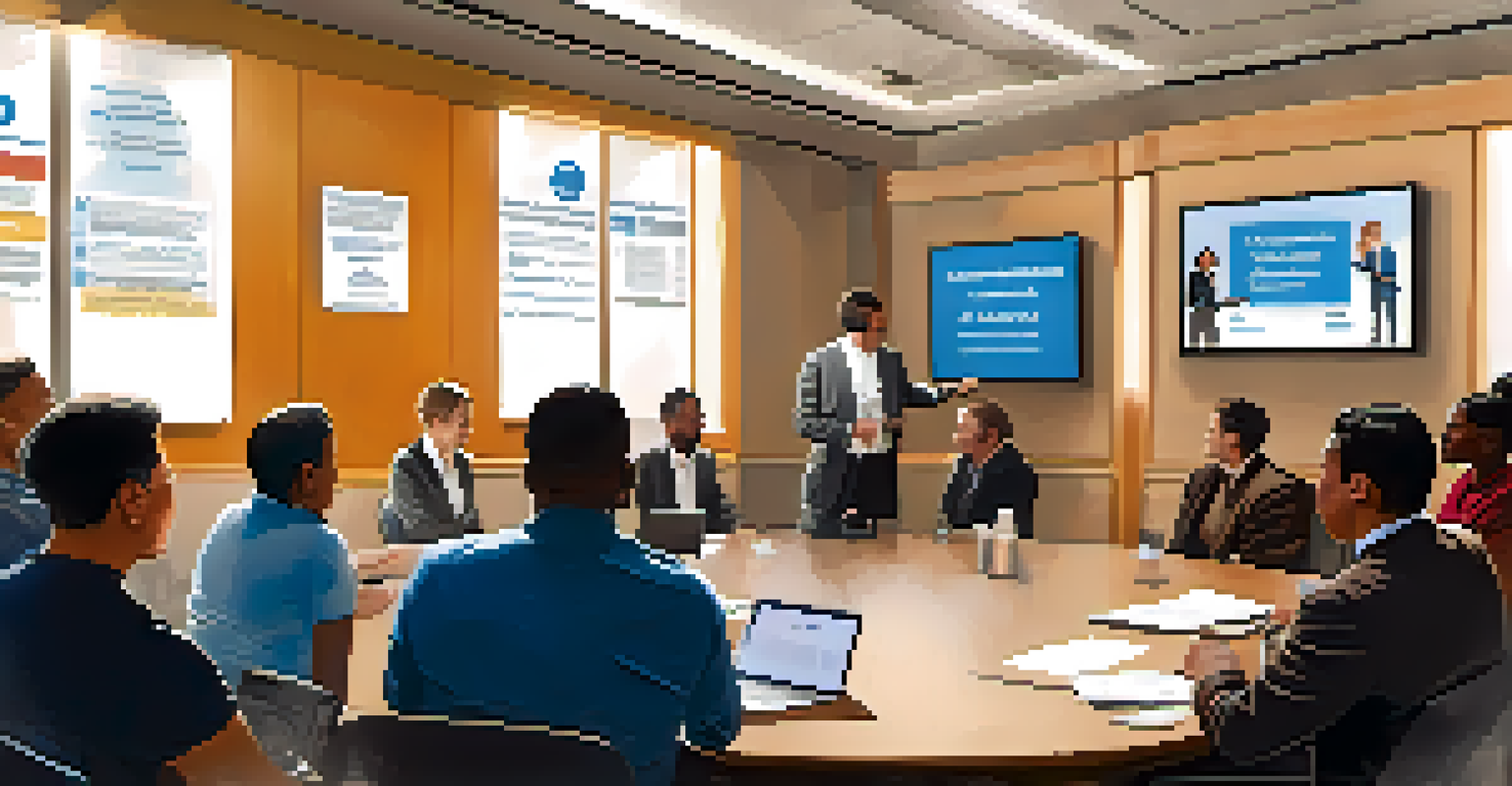The Role of Social Learning in Crisis Management

What Is Social Learning and Why It Matters
Social learning refers to the process of learning through observing others, rather than through direct experience. This concept is essential in understanding how individuals and organizations adapt during crises. By sharing experiences and strategies, teams can collectively navigate challenges more effectively.
The greatest danger in times of turbulence is not the turbulence; it is to act with yesterday's logic.
For instance, consider a fire department responding to a natural disaster. Each member learns from previous operations and from each other, leading to improved tactics and teamwork. This shared knowledge is invaluable, especially in high-stress environments where quick decisions are crucial.
Ultimately, social learning fosters a culture of collaboration and innovation, making it a key asset in crisis management. When individuals feel supported by their peers, they are more likely to contribute ideas and solutions, enhancing overall responsiveness.
The Role of Communication in Social Learning
Effective communication is at the heart of social learning during crises. When teams communicate openly, they share insights and lessons learned, which can be pivotal in managing unpredictable situations. This exchange of information helps build a collective memory that can be referenced in future emergencies.

For example, during a public health crisis like a pandemic, healthcare professionals share findings and protocols through various channels. This not only helps in disseminating vital information quickly but also creates a framework for others to follow, leading to a more coordinated response.
Social Learning Enhances Crisis Response
Observing and sharing experiences among team members leads to improved strategies and teamwork during crises.
Moreover, clear communication reduces confusion and fosters trust within teams. When members feel informed and involved, they are more likely to engage actively in problem-solving, which is essential for effective crisis management.
Learning from Past Crises: A Case Study Approach
One of the most effective ways to implement social learning is through case studies of past crises. Analyzing what went wrong and what went right allows organizations to refine their strategies. Teams can learn from real-life scenarios and adapt those lessons to their own contexts.
In the midst of chaos, there is also opportunity.
Take, for example, the response to Hurricane Katrina. Many organizations studied the successes and failures of emergency responses to improve their future preparedness. By discussing these case studies, teams can identify best practices and avoid repeating mistakes.
This reflective process not only helps in crisis management but also strengthens team cohesion. When team members collaboratively dissect past events, they build a shared understanding that enhances their ability to work together during future crises.
Technology's Role in Facilitating Social Learning
In today's digital age, technology plays a crucial role in facilitating social learning. Online platforms and social media enable quick sharing of information and experiences among teams, regardless of their location. This immediacy can be a game changer during a crisis.
For instance, during a cybersecurity breach, teams can use chat applications to share real-time updates and strategies. This instant communication allows for rapid problem-solving and decision-making, significantly improving the organization's response time.
Communication is Key in Learning
Open communication fosters trust and collaboration, allowing teams to effectively share insights and lessons during emergencies.
Furthermore, technology also provides tools for documentation and analysis, allowing teams to revisit discussions and decisions made during crises. This creates a repository of knowledge that can be invaluable for future challenges.
Building a Culture of Continuous Learning
To maximize the benefits of social learning in crisis management, organizations must foster a culture of continuous learning. This means encouraging team members to seek out new knowledge and share their insights regularly. A proactive approach to learning can significantly enhance crisis preparedness.
For instance, regular training sessions and workshops can be organized to discuss emerging trends and strategies. When employees feel empowered to share their experiences and learn from one another, it creates an environment where innovation thrives.
Moreover, celebrating successes and analyzing failures together reinforces the idea that learning is a collective journey. This cultural shift not only prepares teams for crises but also cultivates resilience and adaptability in the face of uncertainty.
The Importance of Leadership in Social Learning
Leadership plays a pivotal role in promoting social learning during crises. Leaders set the tone for collaboration and communication, influencing how team members engage with one another. When leaders model openness and vulnerability, it encourages others to do the same.
For example, a leader who shares their own experiences from past crises can inspire team members to contribute their insights. This creates a safe space for discussion and problem-solving, which is essential in a crisis situation.
Leadership Drives Social Learning
Leaders who model openness and facilitate training create an environment that encourages continuous learning and enhances crisis management.
Moreover, effective leaders can facilitate training and development opportunities that align with social learning principles. By investing in their teams, they demonstrate the value of continuous learning and collaboration, ultimately enhancing the organization's crisis management capabilities.
Measuring the Impact of Social Learning in Crises
To truly understand the effectiveness of social learning in crisis management, organizations need to measure its impact. This involves evaluating how shared knowledge and collaboration influence outcomes during crises. Metrics can include response times, team cohesion, and overall crisis resolution success.
For instance, organizations can conduct surveys or debrief sessions after a crisis to assess how well teams communicated and collaborated. Analyzing this data helps identify strengths and areas for improvement, leading to better preparation for future challenges.

Additionally, measuring the impact of social learning can highlight the value of investing in training and development. When organizations see tangible benefits, they are more likely to prioritize social learning initiatives in their crisis management strategies.